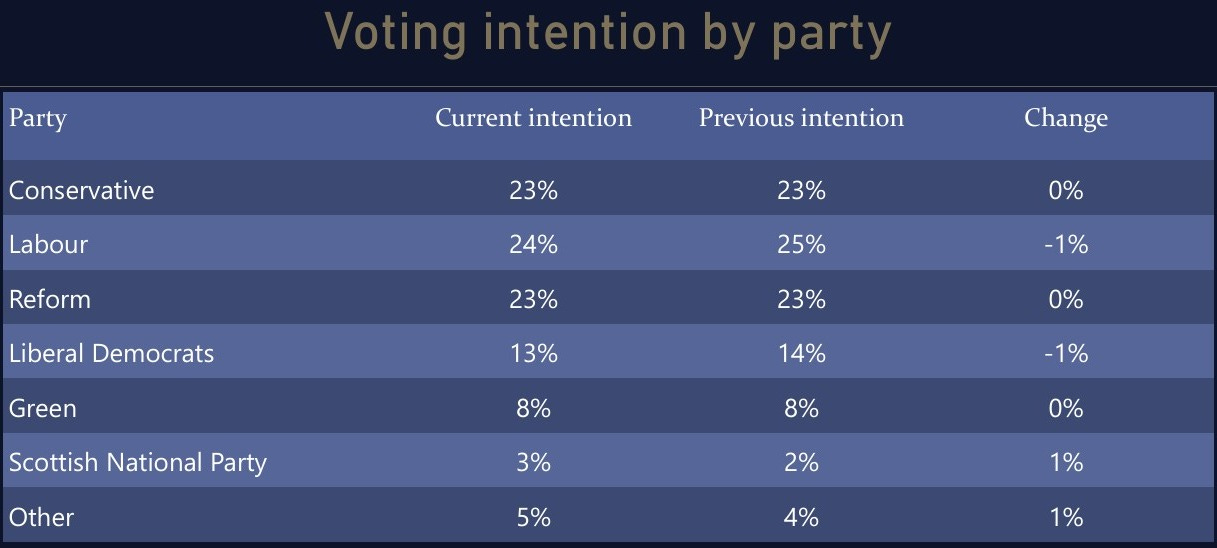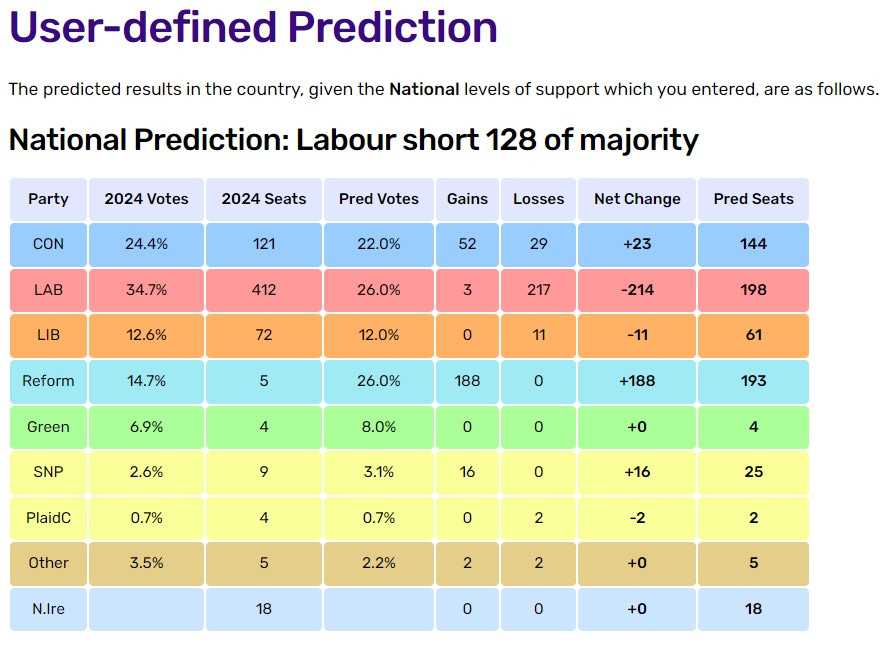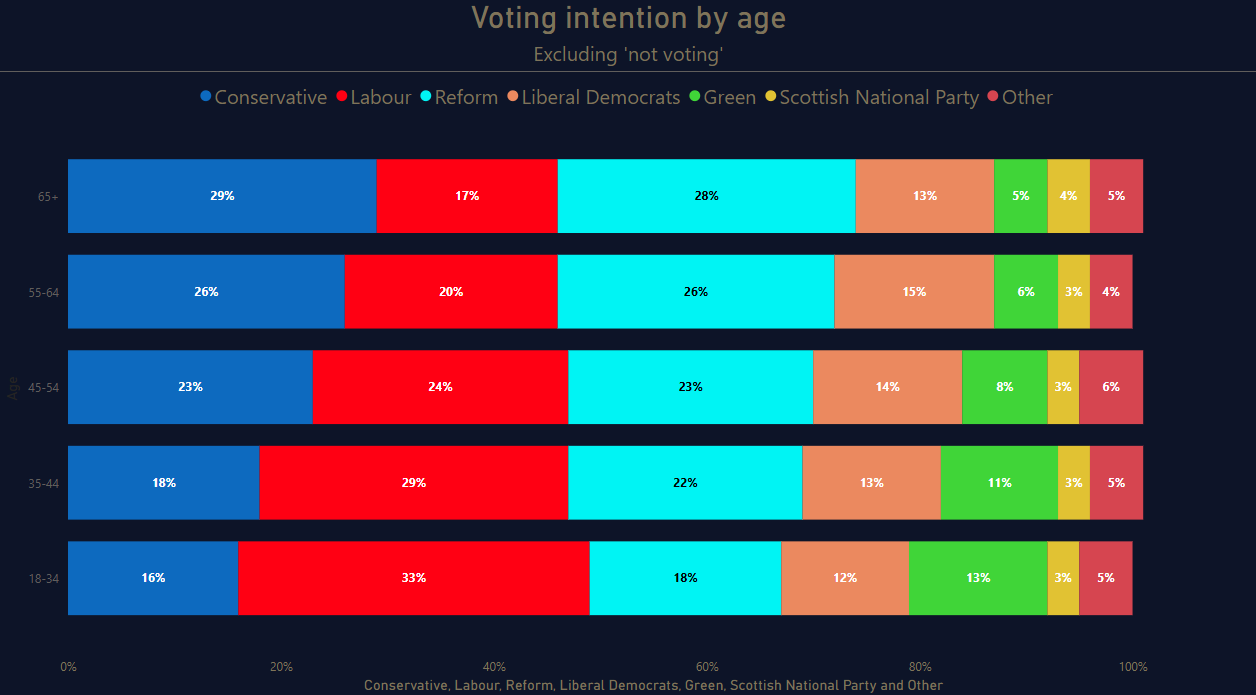Pollster: TechneUK
Sample size: 1,632
Fieldwork dates: 2nd-3rd April 2025
Source
Minor movements seem to be characterising general election polling, which seems odd given the sheer amount of major events taking place; at this stage, it could indicate that voting camps are pretty set, or that apathy is setting in. Taking into account the number of people saying they don’t plan to vote, the latter seems more likely, which I explore below.
Looking at Electoral Calculus, each party would likely take the following number of seats:
Techne tend to use smaller samples than other pollsters, though this has little impact on the validity of the results or the accuracy of the prediction. But by now, the story seems to be written: Reform are going to storm into Parliament, becoming either the second or third largest party, while Labour’s incredibly fragile majority is due to collapse.
This poll did not take into account regional trends, nor was Plaid Cymru on the list of parties, both of which can obscure some important trends, especially given we’re just about a year out of the Welsh Senedd election.
The correlation between parties and age is, as ever, predictable: the right-leaning parties (the Conservatives and Reform) perform better amongst the older generations, whilst the left-leaning parties (Labour and Green) perform better amongst the younger generations. What is, and must be consistently, frustrating for the Conservatives is that Reform are polling higher than the Conservatives in the younger age groups. With the 18-34s preferring Reform to the Tories 18% to 16%, and the 35-44s preferring them by 22% to 18%, the disaffection felt by the youth is going to cause serious problems for the Conservatives in coming elections.
But what about non-voters?
As I say above, apathy seems to be setting in - especially, and starkly, amongst young voters (see below). When asked about whether they will be voting, the fact that 27% are saying they won’t be voting, which is itself a minor shift from the previous month, is revealing and, as I regularly point out, should always be watched carefully given how low national turnout has been in recent elections.
When the number of respondents saying they plan not to vote is factored into the stats, not only do the figures look quite different, but the change month-on-month is even more notable - or the lack thereof. Nevertheless, the comparable levels of support between the (now) major parties is consistent, with Labour, Reform and the Conservatives in first, second and third place respectively.
Alarm bells should be ringing when looking at youth apathy, though. 27% might be the average level of respondents saying they will not be voting, but 48% of under 35s are saying they don’t plan on voting. This might be a protest, especially as younger people are more likely to be radical in their responses to such questions, but, given ongoing concerns over the youth’s commitment to democratic norms, the impact of this response cannot be dismissed out of hand.
Thank you for reading this short Poll Watch post, in which I look at and discuss the most recent public opinion survey. Please consider subscribing to and sharing this blog and, if you’re feeling particularly generous, subscribing to my paid content -(detailed research and policy proposals).







